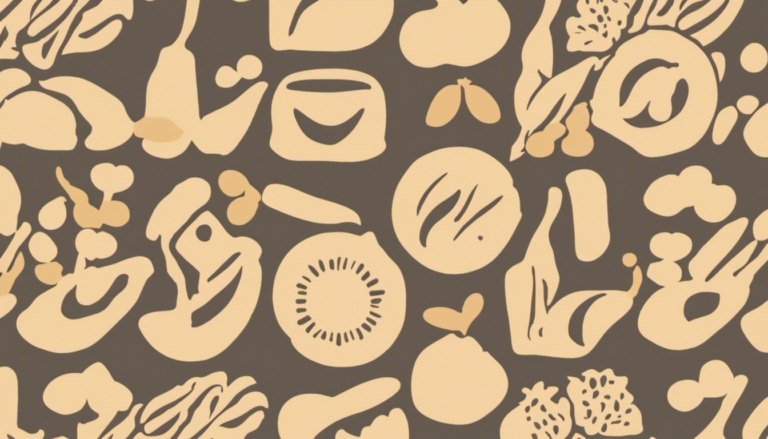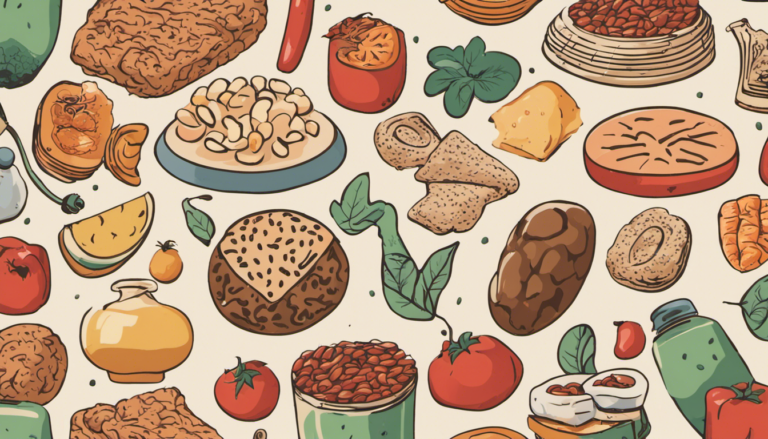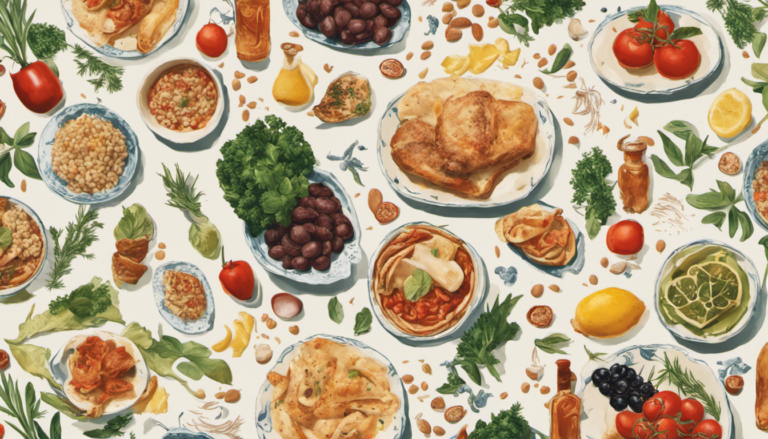Top Healthiest Meals for a Balanced Diet
I. Introduction
A balanced diet is a meal plan that provides your body with all the essential nutrients it needs to function correctly. It includes a variety of foods from all food groups: fruits, vegetables, grains, proteins, and dairy. A balanced diet is not just about eating the right foods, but also consuming them in correct proportions.
Having a balanced diet is crucial for overall health. It helps maintain a healthy weight, reduces the risk of chronic diseases like heart disease and cancer, and promotes overall well-being. A balanced diet also provides energy, improves brain function, and strengthens the immune system.
In this article, we will delve into the components of a balanced diet, the role of portion control, the healthiest meals for a balanced diet, and the benefits of each meal. We will also discuss how to incorporate these meals into your daily routine and the role of physical activity in a balanced diet.
II. Understanding Nutritional Needs
Our bodies need a variety of nutrients to function correctly. These nutrients can be divided into two categories: macronutrients and micronutrients. Macronutrients include proteins, carbohydrates, and fats. They are required in large amounts and provide the energy we need to function.
Proteins are the building blocks of our bodies. They are essential for growth and repair. Carbohydrates are our body’s main source of energy. They are broken down into glucose, which is used by our cells for energy. Fats are also a source of energy and are necessary for absorbing vitamins.
Micronutrients, on the other hand, are vitamins and minerals. They are required in smaller amounts but are still crucial for our health. Vitamins are organic compounds that our bodies need to function correctly. Minerals are inorganic elements that come from the earth and are absorbed by plants. We get minerals by eating plants or animals that have eaten plants.
Water is another essential component of a balanced diet. It helps regulate body temperature, lubricates joints, and aids in digestion. It also carries nutrients and oxygen to our cells. For more information on the importance of hydration, visit our page on the benefits of hydration.
III. The Role of Portion Control in a Balanced Diet
Portion control is a critical aspect of a balanced diet. It’s not just about what you eat, but also how much you eat. Eating too much of any food, even if it’s healthy, can lead to weight gain and other health problems.
Understanding portion sizes can help you maintain a balanced diet. For example, a portion of meat should be about the size of your palm, a portion of grains should be about the size of your fist, and a portion of fruit should be about the size of your fist.
Here are some tips for effective portion control: use smaller plates and bowls, serve food in individual portions instead of family-style, and pay attention to hunger and fullness cues. For more tips on portion control, visit our page on meal prepping tips.
IV. Top Healthiest Meals for a Balanced Diet
Here are some of the healthiest meals for a balanced diet:
| Meal | Ingredients |
|---|---|
| Breakfast: Oatmeal with fruits and nuts | Oats, fruits (like berries or bananas), and nuts (like almonds or walnuts) |
| Mid-Morning Snack: Greek yogurt with berries | Greek yogurt and berries (like strawberries or blueberries) |
| Lunch: Grilled chicken salad with whole grain bread | Grilled chicken, salad greens, vegetables (like tomatoes or cucumbers), and whole grain bread |
| Afternoon Snack: Hummus with raw vegetables | Hummus and raw vegetables (like carrots or bell peppers) |
| Dinner: Baked salmon with quinoa and steamed vegetables | Baked salmon, quinoa, and steamed vegetables (like broccoli or asparagus) |
| Evening Snack: A piece of dark chocolate and a handful of almonds | Dark chocolate and almonds |
For more healthy meal ideas, visit our page on healthy breakfast ideas.
V. Benefits of Each Meal
Each of these meals provides a variety of nutrients and contributes to a balanced diet. For example, oatmeal with fruits and nuts for breakfast provides carbohydrates for energy, protein for growth and repair, and vitamins and minerals for overall health.
Greek yogurt with berries for a mid-morning snack provides protein and calcium from the yogurt and vitamins and antioxidants from the berries. Grilled chicken salad with whole grain bread for lunch provides protein from the chicken, fiber from the salad greens and bread, and vitamins and minerals from the vegetables.
Hummus with raw vegetables for an afternoon snack provides protein and fiber from the hummus and vitamins and minerals from the vegetables. Baked salmon with quinoa and steamed vegetables for dinner provides protein and omega-3 fatty acids from the salmon, fiber and protein from the quinoa, and vitamins and minerals from the vegetables.
A piece of dark chocolate and a handful of almonds for an evening snack provides antioxidants from the dark chocolate and protein and healthy fats from the almonds. For more information on the nutritional benefits of these meals, visit our page on protein sources.
VI. How to Incorporate These Meals into Your Daily Routine
Incorporating these meals into your daily routine can be easy with a little planning and preparation. Start by planning your meals for the week. This can help you avoid last-minute unhealthy food choices. Then, prepare your meals in advance. This can save you time and make it easier to stick to your meal plan.
Here are some tips for meal planning and preparation: make a grocery list based on your meal plan, prepare meals in bulk and store them in the fridge or freezer, and use a slow cooker or instant pot for easy and healthy meals. For more tips on meal planning and preparation, visit our page on meal prepping tips.
To prevent boredom, try varying your meals. For example, you can switch up the fruits and nuts in your oatmeal, use different types of protein in your salad, or try new vegetables with your hummus. For more meal variation ideas, visit our page on healthy breakfast ideas.
VII. The Role of Physical Activity in a Balanced Diet
Physical activity is an important part of a balanced diet. It can help you maintain a healthy weight, reduce the risk of chronic diseases, and improve overall well-being. Physical activity can also help you balance the calories you consume with the calories you burn.
Here are some suggestions for incorporating physical activity into your routine: take a walk during your lunch break, join a gym or fitness class, try a new sport, or do exercises at home. For more suggestions on incorporating physical activity into your routine, visit our page on exercise and fitness.
Remember, it’s important to find a physical activity that you enjoy. This can make it easier to stick to your routine and achieve your health goals. For more information on the importance of physical activity in maintaining a balanced diet, visit our page on exercise vs diet.
VIII. Conclusion
In conclusion, a balanced diet is crucial for overall health. It provides your body with all the essential nutrients it needs to function correctly. The top healthiest meals for a balanced diet include oatmeal with fruits and nuts for breakfast, Greek yogurt with berries for a mid-morning snack, grilled chicken salad with whole grain bread for lunch, hummus with raw vegetables for an afternoon snack, baked salmon with quinoa and steamed vegetables for dinner, and a piece of dark chocolate and a handful of almonds for an evening snack.
Remember, it’s not just about what you eat, but also how much you eat. Portion control is a critical aspect of a balanced diet. Physical activity is also an important part of a balanced diet. It can help you maintain a healthy weight, reduce the risk of chronic diseases, and improve overall well-being.
We encourage you to incorporate these meals into your diet and experience the benefits of a balanced diet. For more information on a balanced diet, visit our page on the best diet for weight loss.







